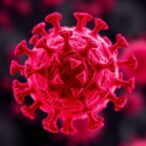Dendritic cells (DCs) are among the first immune sentinels to detect viruses, bacteria, or other challenges. These specialized messengers alert T cells while orchestrating either a measured calm or a full-force attack. But until now, researchers have struggled to understand what makes dendritic cells choose one path over the other.
Belgian scientists have found part of the answer in the same technology behind COVID-19 mRNA vaccines: lipid nanoparticles (LNPs). Their study, “Lipid nanoparticles as a tool to dissect dendritic cell maturation pathways,” published in Cell Reports, provides a detailed map of how LNPs direct dendritic cell fates. The work, led by Sophie Janssens, PhD, a professor at the VIB-UGent Center for Inflammation Research, with colleagues at the University of Ghent, the VIB Single Cell Core, and the University of Brussels, could pave the way for both safer vaccines and novel therapies for autoimmune disease.
By combining cellular indexing of transcriptomes and epitopes sequencing (CITE-seq) with flow cytometry, the researchers mapped how dendritic cells process LNPs and discovered distinct transcriptional signatures that separate “homeostatic” from “immunogenic” maturation. The results show that it’s not the lipid shells themselves, but what they carry, that determines immune outcomes.
“We found that empty LNPs don’t strongly activate the immune system,” said Sofie Rennen, PhD, a postdoctoral researcher at VIB-UGent and first author of the study. “That’s good news, because it means they can deliver vaccine components without triggering unintended inflammation. But more importantly, by choosing what we load into them, we can steer the immune response in specific ways.”
mRNA-loaded or Toll-like receptor (TLR) ligand–adjuvanted LNPs drive immunogenic maturation, complete with antiviral signatures and activation of T cells. By contrast, empty or peptide-loaded LNPs nudged DCs toward a homeostatic program, which “could have potential as tolerogenic vaccines,” the researchers wrote.
They added: “This reveals that LNPs are not decoded as ‘dangerous’ by DCs, and that the cargo is essential to provide adjuvant activity, which is highly relevant for the targeted design of LNP-based therapies.”
Victor Bosteels, PhD, a postdoctoral researcher at VIB-UGent and co-first author, emphasized the therapeutic potential: “Our work might lay the groundwork for ‘calming’ vaccines for autoimmune diseases by encouraging a healthy immune system instead of inflammation.”
From a mechanistic standpoint, the authors’ flow cytometry and transcriptional profiling revealed clear signatures that distinguish homeostatic from immunogenic dendritic cells. Their summary noted: “Uptake of empty (or peptide-containing) LNPs induces homeostatic maturation in DCs, while uptake of Toll-like receptor ligand-adjuvanted (or mRNA-containing) LNPs induces immunogenic maturation, yielding distinct T cell outputs.”
The findings build on a broader recognition that dendritic cells decode antigens not only based on their presence, but on the molecular packaging. “Overall,” said Janssens, “mapping how dendritic cells respond to different vaccine elements allows us to target the immune system more precisely and safely, which can lead to the next generation of vaccines.”
The study underscores a central message: lipid nanoparticles are not inherently “dangerous” to dendritic cells. Instead, their cargo determines whether they elicit tolerance or immunity. By clarifying this immune crossroads, Janssens and her colleagues at VIB and Ghent may have provided a blueprint for designing both stronger vaccines and gentler, tolerance-inducing therapies.


